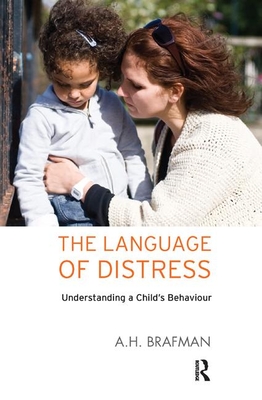Read The Language of Distress: Understanding a Child's Behaviour - A.H. Brafman file in PDF
Related searches:
518 1020 3726 3297 2765 2137 2799 1379 2869 1957 3289 2866 3735 2536 849 3247 881 4296 640 3941 1088 4888 3793 1478 2239 4815 267 1558 4298 2668 1594 3274 4071 2552 3839 955
Understanding body language can go a long way toward helping you better communicate with others and interpreting what others might be trying to convey. While it may be tempting to pick apart signals one by one, it's important to look at these nonverbal signals in relation to verbal communication, other nonverbal signals, and the situation.
Most clinicians at the local hospital had little understanding of hmong medical anthropology: their health-related beliefs, values, and behaviors.
Avendees will be able to cri~cally reflect on: 1) the different ways in which mental health difficul~es can present across different cultures.
Squirming and loudly crying similarly indicates he is in distress and perhaps is in need of a diaper change. Before we learned formal, spoken language as a species, what we now call non-verbal.
The language used by women to express emotional or psychological distress was distinctive, and different from the psychological or psychiatric language which is more familiar to the indigenous population. Bangladeshi women talked about feeling ‘restless or without peace’ in their minds.
Crow language can at the most simple level be broken down into two major categories that you’ll hear when you’re out in the field. I would hazard a guess that not knowing how to listen for these two categories accounts for most of the confusion that beginning bird language people have around understanding crows.
Challenges with accurately identifying and measuring a subjectively assessed constellation of symptoms are interfering with efforts to quantify and address widespread clinician distress. 3,4 shifting the language of distress to incorporate etiology could potentially allow better assessment and more targeted solutions to the crisis.
The language of distress: understanding a child's behaviourand over 8 million other books are available for amazon kindle.
Understanding the linguistic patterns displayed by those experiencing mental distress can identify the difficulties people have and inform the development of appropriate treatments and interventions. One important aspect of language that reveals information about mental states is the use of personal pronouns.
The proposal is put forward that the symptom can be seen as a language, a manner of expressing an underlying emotional anxiety.
Feb 1, 2020 what is distress? the word distress has many meanings. Distress is an unpleasant emotion, feeling, thought, condition, or behavior.
My goal is to get a better understanding of the variables that cause psychological distress and to see how well it can predicted the main code located within.
Aug 19, 2016 most participants believed the medical model for understanding mental distress to be both damaging and unhelpful, and did not feel it helped.
Jul 26, 2019 in many instances, the same local term may function as an idiom or explanation and, in some cases, name an identifiable syndrome.
Understanding such distinctions will help clinicians more accurately diagnose prob- lems as well as more effectively treat them.
Below is a summary of preferred language to use when communicating about illness and how they understand and interpret the symptoms of mental illness. And enormous loss that can impact on distress and vulnerability to mental illne.
The term 'cultural concept of distress' is a new addition to the diagnostic and statistical manual of mental disorders (dsm) series with the publication of dsm-5: 'cultural concepts of distress refers to ways that cultural groups experience, understand, and communicate suffering, behavioral problems, or troubling.
Cultural understanding of these symptoms can help build a therapeutic alliance with a patient. While cultural concepts of distress alone do not indicate the presence of a diagnosable mental disorder, they do indicate vulnerable individuals or populations that could benefit from mental health promotion initiatives and other public health activities.
Research on mental health in specific communities requires careful attention to cultural context and language. Studies on global mental health have increasingly analyzed idioms of distress, or culturally situated ways of conceptualizing, experiencing, and expressing distress.
This is as much a work of sociology, politics, and philosophy, as it is of psychology. Fundamentals of an environmental understanding of distress are outlined.
The language of distress is one of seven titles by abe brafman, the seventh of which will be published in 2018. His books are addressed to parents and professionals and offer insights into how psychoanalytic understanding can be use to help in everyday parenting as well as when problems arise.
Brubaker1 content and thematic analyses to understand grieving practices.
This shift helped promote new understandings of mental health and illness and was further advanced by the “new cross-cultural psychiatry”, which saw mental.

Post Your Comments: